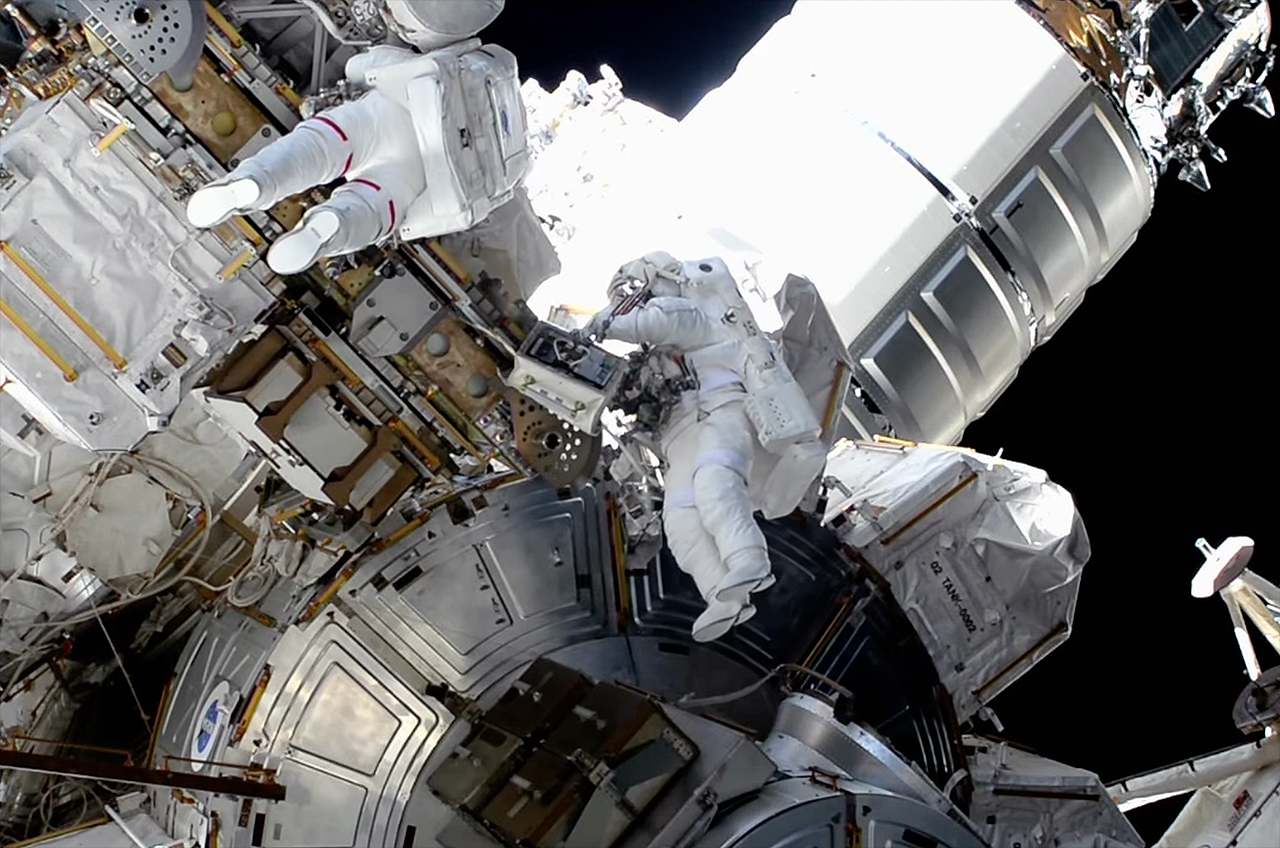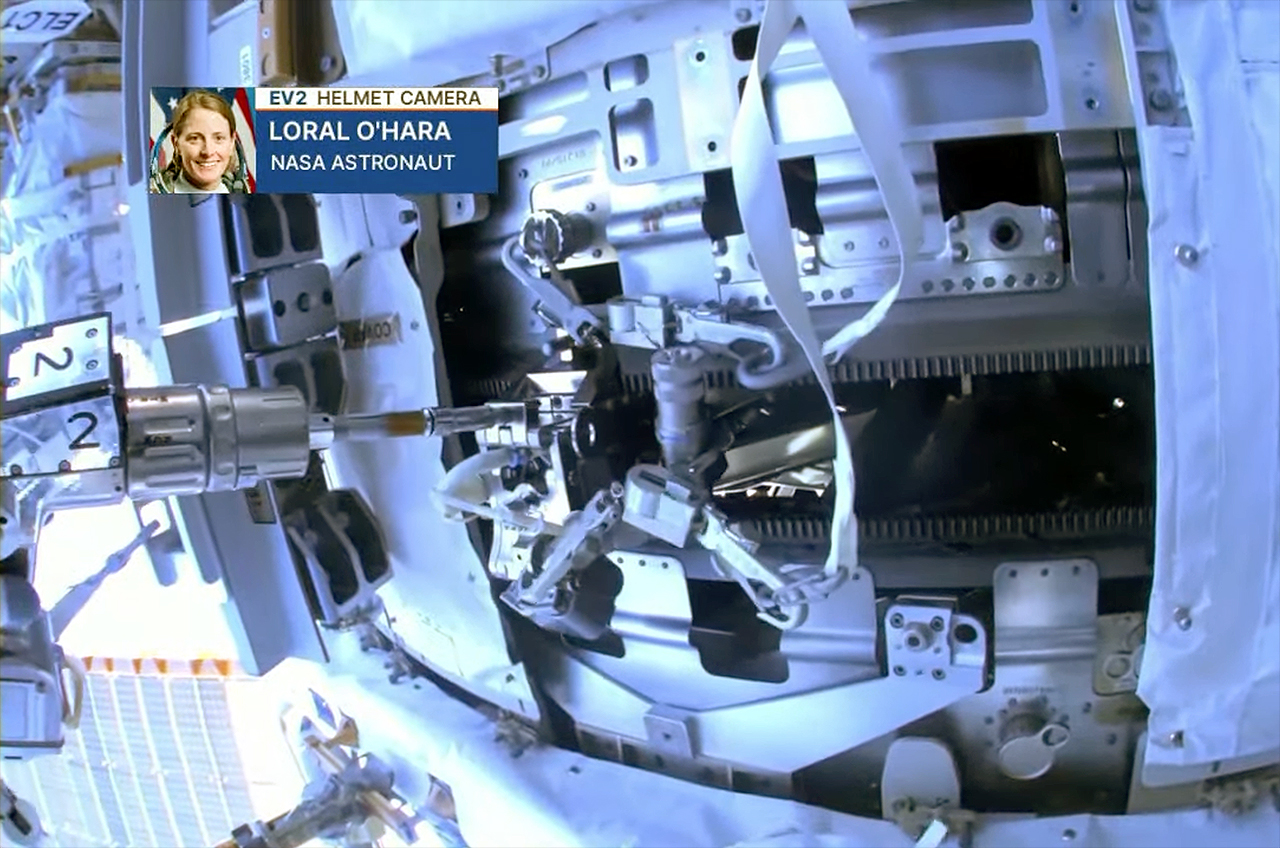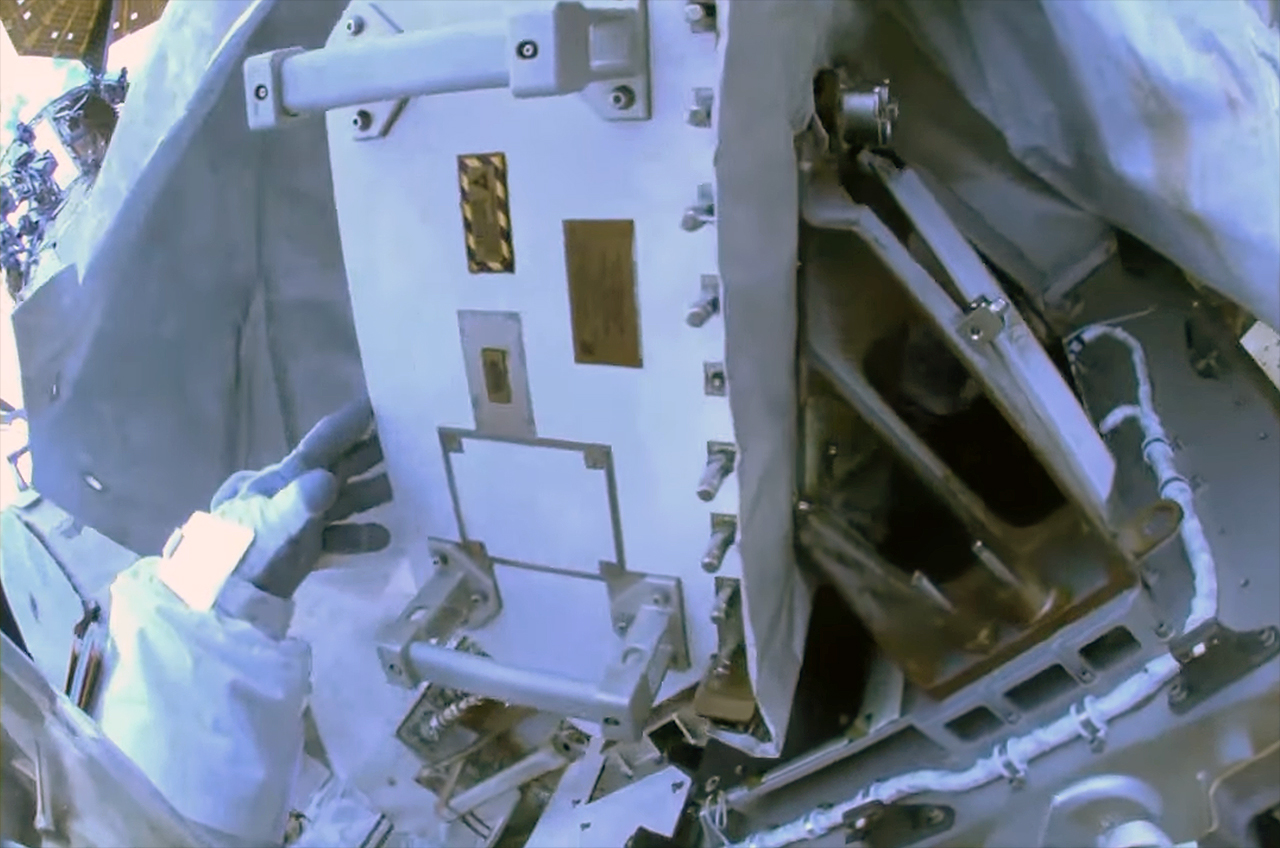NASA astronauts complete 4th-ever all-female spacewalk outside International Space Station
Jasmin Moghbeli and Loral O'Hara spent 6 hours and 42 minutes performing station maintenance.
Two NASA astronauts completed their first spacewalk together outside of the International Space Station, the fourth all-female EVA (extravehicular activity) in history.
Expedition 70 crewmates Jasmin Moghbeli and Loral O'Hara replaced a bearing to keep the solar arrays on the International Space Station (ISS) rotating properly and conducted other maintenance activities, but ran out of time to finish the other major task planned for the spacewalk, the removal of an electronics box from a communications antenna.
Moghbeli and O'Hara switched their spacesuits to battery power at 8:05 a.m. EDT (1205 GMT) on Wednesday (Nov. 1), marking the official start of the EVA. After exiting the U.S. Quest airlock and configuring their tethers and tools, the two astronauts went separate ways to tackle their first scheduled tasks.
Related: International Space Station astronauts show off creative outfits for Halloween

Moghbeli first focused on the removal of a handling fixture, clearing the way for the future installation of an additional ISS roll-out solar array (iROSA). The additional array, together with five earlier extended arrays, will augment the station's power supply to support expanded commercial activities on the orbiting outpost.
Moghbeli also photo documented the site where the new iROSA wing will be added.
O'Hara, meanwhile, began the work to begin replacing one of 12 trundle bearing assemblies on a solar alpha rotary joint (SARJ) on the port (or left) side of the station's backbone truss. She pulled back the insulation blankets covering the toothed race ring on which the bearings run and, after an inspection, reported seeing no metal shavings or damage caused by the outgoing assembly.
Get the Space.com Newsletter
Breaking space news, the latest updates on rocket launches, skywatching events and more!
Unfortunately, the trundle bearing did not come free as easily as expected. O'Hara, assisted by Moghbeli, ran into delays loosening the bolts holding the degraded trundle bearing in place. Though it finally came loose, it left Moghbeli and O'Hara about an hour behind in the schedule.
With the old bearing removed, Moghbeli set off to straighten out an ethernet cable providing data transfer for an external camera while O'Hara worked with a microgravity grease gun to lubricate the race ring before installing the spare trundle bearing. She then switched to a pistol grip tool — a custom designed space drill — to secure the replacement unit's bolts, which went in without issue.
"Nicely done ladies, we're going to call that a good bolt," Mission Control radioed O'Hara and Moghbeli.

The two spacewalkers then moved on to get what work they could do in the available time left to prepare an electronics box, called the Radio Frequency Group (RFG), for its removal. The same task proved troublesome during an earlier EVA conducted by NASA astronaut Stephen Bowen and United Arab Emirates (UAE) astronaut Sultan Al Neyadi in April 2023.
The original plan for Wednesday's spacewalk called for Moghbeli to install a foot restraint at the end of the station's Canadarm 2 robotic arm and then use it to ride to where the S-band radio frequency group box is located on the starboard (or right) side of the truss. Given the unit's removal was now waived for a later EVA, Mission Control directed Moghbeli to forgo use of the robotic arm and just make her way over to the work site.
O'Hara reinstalled installation over the SARJ race ring, cleaned up her tools and completed a "get-ahead" task on a crew equipment and translation aid (CETA) cart before joining Moghbeli to free some adhesive (RTG), preparing the RFG for its removal on a future EVA.

Towards the end of the spacewalk, O'Hara reported that her communications carrier (or "Snoopy cap") was sliding down her forehead, but not impeding her vision. With her tasks complete, Mission Control directed her to return to the airlock as Moghbeli collected her tools and then did the same.
The spacewalk ended with Moghbeli and O'Hara back inside the Quest airlock as it began being re-pressurized at 2:47 p.m. EDT (1847 GMT) for a total time of 6 hours and 42 minutes.
"This is a very special moment for me, going on my first spacewalk with a good friend and someone I really look up to, Loral," said Moghbeli from inside the airlock.
"I feel the same way about the spacewalk with you," replied O'Hara.
Moghbeli and O'Hara are the second pair of women to conduct an all-female EVA. Three previous spacewalks were performed by NASA astronauts Christina Koch and Jessica Meir in October 2019 and January 2020.
Wednesday's EVA was the 269th in support of the assembly, maintenance and upgrade of the International Space Station. It was the 12th ISS spacewalk of the year and the second during Expedition 70.
Join our Space Forums to keep talking space on the latest missions, night sky and more! And if you have a news tip, correction or comment, let us know at: community@space.com.

Robert Pearlman is a space historian, journalist and the founder and editor of collectSPACE.com, a daily news publication and community devoted to space history with a particular focus on how and where space exploration intersects with pop culture. Pearlman is also a contributing writer for Space.com and co-author of "Space Stations: The Art, Science, and Reality of Working in Space” published by Smithsonian Books in 2018.In 2009, he was inducted into the U.S. Space Camp Hall of Fame in Huntsville, Alabama. In 2021, he was honored by the American Astronautical Society with the Ordway Award for Sustained Excellence in Spaceflight History. In 2023, the National Space Club Florida Committee recognized Pearlman with the Kolcum News and Communications Award for excellence in telling the space story along the Space Coast and throughout the world.









